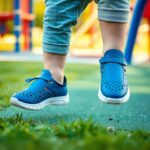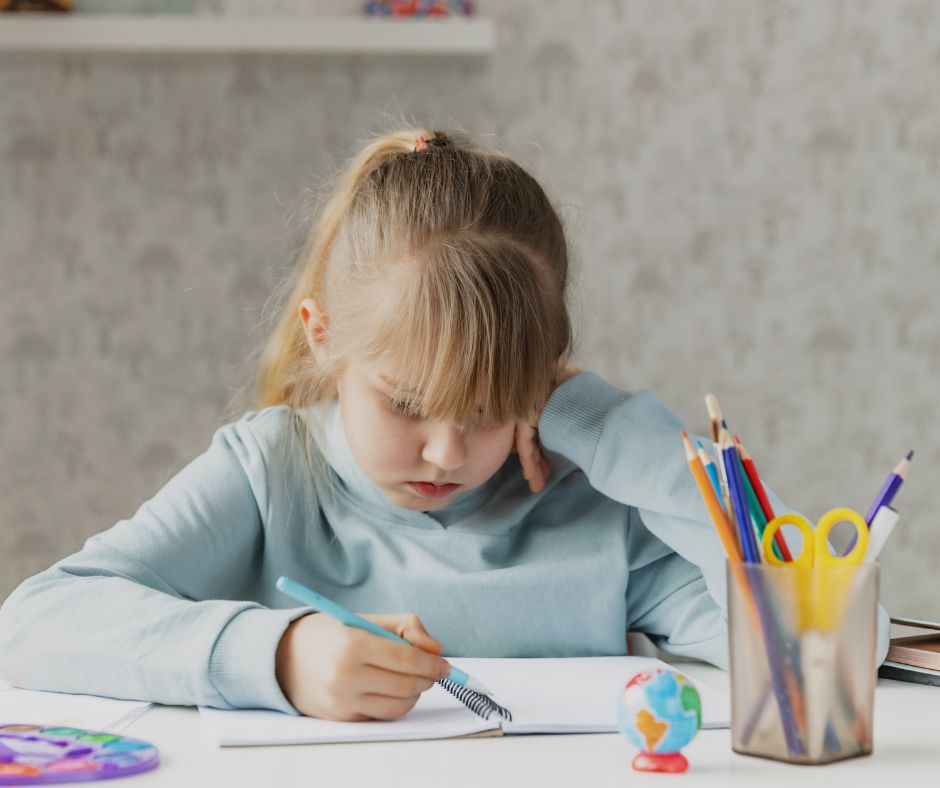Survival Skills Unleashed: A Parent’s Guide for Kids
Learning to survive in harmful conditions is crucial to child development. It gives them confidence and the ability to overcome obstacles while ensuring their safety. Children who learn practical skills are better prepared for unforeseen events in the world.

Basic First Aid Skills
Teaching basic first aid skills is one of the best investments in children’s health and safety. These fundamental abilities help youngsters respond to minor injuries and develop responsibility and self-confidence.
Start by teaching them about wound cleanliness. Remind people to wash their hands before touching any wound. Children should learn to clean tiny wounds with light soap and warm water, removing any debris or filth. This essential hygiene idea underpins infection prevention and full healing.
After that, educate kids on how to cure small wounds. Introduce the different types of sterile dressings and emphasise the importance of choosing the right size to cover the wound. Encourage them to gently pat the wound dry with a clean cloth before dressing. Please also explain why antiseptic ointments prevent infection and aid recuperation.
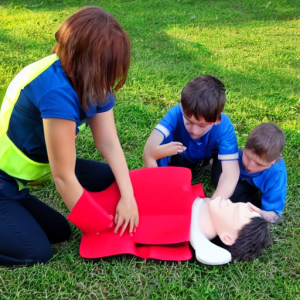
It’s crucial to demonstrate bandage application. They must be shown how to wrap a bandage around the incision snugly but not too tightly. To maximise protection, emphasise attaching the bandage with clips or sticky strips and keeping it in place. Children must learn that the bandage secures the dressing and shields the wound from outside toxins.
The ability to apply adhesive strips is another important first aid skill. Show how to use adhesive strips and explain why they must be tightly applied without being too tight to seal tiny cuts or sores. Encourage them to assess the wound’s severity and choose the best closure.
Stress the importance of staying calm and focused during this treatment. Encourage kids to believe that their first aid actions can improve someone’s health. These basic first aid skills help youngsters learn about injury treatment, build empathy, and prepare for unexpected situations.
Fire Safety Skills
Fire safety education equips kids to handle perilous situations. It entails teaching the mechanics of building and extinguishing fires, as well as fire safety and accountability.

Fire safety must be stressed to start the course. These rules emphasise fire risks and the need for vigilance and set a standard for responsible behaviour. Children should learn to follow these rules and understand why, which will help them develop a proactive safety mindset.
Next, teach them how to build a fire safely. Find an airy, flammable-free spot to start. Encourage responsible resource collection, focusing on dry leaves, twigs, and short branches. Show them how to build a fire lay and teach them about teepee and log cabin styles, depending on the situation.
Being how to put out a fire safely is also crucial. Teach kids how to extinguish a fire, starting with the need of having a bucket of water or sand on hand. Please show how to throw water over the fire to extinguish all embers. The ashes must be stirred and water supplied to cool the area. Teach ‘leave no trace’ to emphasise the need to clean up the building’s fire site.
Practical demonstrations and hands-on encounters can reinforce these principles. Supervised fire-building exercises help kids gain confidence and competence by applying their knowledge. This method emphasises personal responsibility and accountability when dealing with fire and highlights the value of the above concepts.
The goal is to instill a lifetime of fire safety, not only fire mechanics. This knowledge and responsibility prepares youngsters for outdoor activities and crises, ensuring their safety and that of others.
Identifying and Using Tools
It is a transformative educational experience to teach children how to identify and use tools. This not only develops practical skills in the youngsters, but it also develops a sense of responsibility and ingenuity in them. Not only is it necessary to familiarise children with physical instruments, but it is also necessary to instill in them a profound understanding of the purpose of tools, the proper manner to use them, and the importance of acting responsibly when handling them.

Begin by introducing basic tools, such as a Swiss Army knife appropriate for the child’s age. This multifunctional tool is an excellent beginning point, demonstrating a wide range of features and uses through its use. It is critical to emphasise the adaptability of each component and to explain the scenarios that may necessitate the usage of diverse instruments. An initial introduction like this piques one’s interest and lays the framework for a more in-depth study of the technology.
While you’re getting into the more practical parts of tool use, it’s important to teach kids how to use tools properly and safely. To begin, transmit a fundamental notion of tool safety, emphasising the importance of respecting the capabilities and limitations of the tool in question. It is critical to exhibit strong handling skills, such as using a firm grip on tools and keeping a safe distance from sharp edges.
Guide children through the process to help them understand how to use each tool properly. The importance of precision and attention should be reinforced in the learner, regardless of whether they are cutting something with a screwdriver, pliers, or a knife. It is critical to emphasise the importance of using the right tool for the right job and to instill an appreciation for the efficiency and effectiveness that come with using the right equipment.
Hands-on, supervised activities should be included to provide practical experience. Encourage children to participate in projects that are simple to comprehend, appropriate for their age, and allow them to apply their newly acquired information. Lessons learned are not only reinforced but also confidence and a sense of success are gained as a result.
In addition, emphasise the significance of accepting responsibility for tool maintenance. Teach children the basics of cleaning, storing, and caring for tools so that they endure a long time and perform to their maximum capacity. Tool education covers more than just the act of utilising them; it also assists students in developing a more holistic sense of ownership and responsibility.
In the end, the goal is to raise a generation that views tools as more than just tools, but as valuable resources that must be used with care. The implementation of an all-encompassing tool education plan can result in the development of children’s practical skills, critical thinking abilities, and a thorough knowledge of the role that tools play in problem-solving and self-sufficiency.
Navigation Skills
Giving children the capacity to navigate the great outdoors as well as the complexities of the world around them is akin to giving them a compass for life. This means that youngsters will be able to move freely between the two environments. The foundation of these talents is not only the instruction of the principles of map reading but also the instillation of a profound understanding of the cardinal directions through the use of a compass.

Begin the class by introducing the core skills required for map reading. One of the most fundamental concepts to teach youngsters is that maps are visual representations of space and terrain. The initial stage is to construct simple maps, potentially of their neighbourhood or a local park. You should teach students how to identify crucial elements such as symbols, landmarks, and scale. As their level of skill grows, gradually offer more complex maps to promote a gradual growth in their capacity to understand maps.
When children are gradually introduced to the cardinal directions, they get a greater knowledge of the fundamental points on a compass, which are north, south, east, and west. Explain the significance of these directions by using real-world examples, such as the sun rising in the east and setting in the west. Incorporate games and activities that need hands-on participation to make learning about the cardinal directions more enjoyable and memorable.
It is critical to understand the compass as a valuable tool for navigating the outdoors. It is critical to teach children how to properly handle a compass and align it with the Earth’s magnetic field. Demonstrate how the needle points in the direction of north to help with other directions. Encourage children to participate in hands-on activities in which they navigate from one area to another using a map and a compass, thus enhancing their understanding through application of the material.
You should also mention the concept of orienteering, which is a recreational activity that blends map reading and globe navigation. This not only adds an element of excitement, but it also helps them strengthen their talents dynamically and excitingly.
As the kids’ navigation abilities improve, challenge them with more sophisticated challenges. Planning routes, recognising geography, and estimating distances are some examples of these exercises. You should encourage pupils to utilise the knowledge they have received in everyday circumstances to assist the smooth absorption of navigational skills into their daily lives.
In essence, the goal is to develop a feeling of spatial awareness and the ability to navigate with confidence, whether in the wide outdoors or in the context of their daily life. When children are taught navigational skills in an all-encompassing approach, they not only acquire practical tools for exploration, but they also develop the ability to think critically and form a stronger connection to the environment that surrounds them throughout their growth.
Basic Cooking Skills
Giving children basic cooking skills is an investment that goes beyond the kitchen, as it supports the development of their independence, creativity, and fundamental understanding of nutrition. Teaching children how to prepare simple meals using portable stoves or open flames not only promotes a sense of self-sufficiency and responsibility, but it also equips them with crucial life skills.

To begin, present the concept of a portable stove or an open fire as a versatile and effective technique of cooking. It is critical to emphasise the importance of safety procedures such as keeping a safe distance from the flames, cooking in designated areas, and being aware of the potential dangers associated with open fires. Developing a conscious attitude towards cooking in a range of situations can be accomplished by following certain safety behaviours from the start.
Give them advice on how to set up and use a portable cooker securely. Show how to correctly light the stove, adjust the temperature, and extinguish the flames while it is burning. When using stoves inside, it is critical to emphasise the importance of good ventilation, as well as selecting acceptable outdoor settings away from combustible things.
Children should be taught the basics of kitchen tools and the functions they serve. Give students instruction on how to use knives, pots, and pans safely, with a special emphasis on proper cutting methods and safe handling of heated surfaces. Because of this underlying understanding, students may approach the culinary process with confidence and awareness.
Guide children through the process of learning how to prepare basic meals. To begin, select recipes that demand a limited amount of ingredients and simple preparation methods on your part. Instruct them to wash their hands before handling food and to keep their work surfaces neat and organised to ensure they understand the importance of keeping a clean and organised kitchen.
It is critical to incorporate nutrition education into cooking classes. This involves teaching the importance of eating a well-balanced diet and the nutritional value of diverse materials. This not only enhances their culinary skills, but it also builds a favourable relationship with food, which is an important benefit.
Throughout the culinary training, you must maintain a strong attention on safety when handling hot things. It is critical to teach children how to wear oven mitts or pot holders properly to avoid burns and scalds on their hands. When working with heat sources, it is critical to emphasise the importance of staying alert and practicing caution.
Allowing children to play with different flavours and textures in the kitchen is an excellent approach to foster creativity. This not only makes learning more enjoyable, but it also fosters a lifelong appreciation for the performing arts of cooking.
Water Safety
It is vital to teach children about water safety because it allows them to develop critical abilities that extend far beyond the limitations of the pool. Teaching swimming and water safety skills not only fosters a love of water-related activities, but it also lays the framework for swimming and water safety experiences that will last a lifetime. Educating individuals about the dangers of open water and the importance of wearing life jackets is critical for instilling a deep respect for water-related areas.

Children should be taught the principles of swimming strokes at the start of their learning process. The breaststroke, freestyle swimming, and floating are considered the three most significant swimming strokes for water safety. To begin, students should start in a monitored shallow area and proceed to deeper waters as their confidence and overall skill grows. Strength, endurance, and muscle memory are all crucial components for water safety, thus it is critical to encourage regular practice.
Simultaneously, emphasise water safety skills that go beyond swimming strokes. You should teach toddlers how to tread water correctly, which will help them conserve energy and stay afloat in a variety of situations. It is critical to instill a sense of responsibility for the safety of persons in aquatic environments by teaching basic rescue skills. Reaching for a person in danger with a pole or a flotation device is one of these ways.
Transitioning to open water safety while emphasising the unique challenges that lakes, rivers, and oceans provide. Children should be taught about the unpredictability of open water, which includes currents, waves, and varying depths. Before engaging in activities involving aquatic settings, it is critical to emphasise the need of examining and comprehending the specific characteristics of each open water location.
Make a point of emphasising the importance of life jackets in maintaining water safety. It is critical to show appropriate life jacket wear and explain the purpose of the buoyancy feature. Life jackets are essential for persons of all swimming abilities because they provide a key safety net in the event of depletion, unexpected currents, or crises. It is critical to instill the habit of wearing life jackets regularly, especially when participating in sports like rafting, kayaking, or boating.
Furthermore, children should be included in water safety scenarios through role-playing and simulated emergencies. The employment of this hands-on strategy, which contributes to the development of a composed and considered reaction, improves their ability to respond successfully in real-life settings.
Buddy systems and regular monitoring should be implemented, and a culture of mutual responsibility and alertness should be developed whenever people are in or near water. Encourage open discussion about the potential dangers that may exist and the need of following to the water safety guidelines that have been set.
Building Shelter
Teaching youngsters how to build a shelter is more than just a way of passing on survival skills; it is also a lesson in ingenuity, flexibility, and self-sufficiency. It not only prepares children for outdoor activities, but it also instills in them a sense of resilience and problem-solving abilities. The capacity to build a simple shelter out of easily available materials. By emphasising the importance of keeping a dry and comfortable environment, a deeper level of comprehension is obtained. This helps to connect the lesson to broader notions about safety and well-being in several circumstances.

One of the first topics that should be covered in this session is the concept of shelter as a basic human need. There are numerous types of shelters, ranging from simple lean-tos to more complex structures. Discuss the many types of shelters, focusing on their functions and their materials. Encourage an appreciation for the creativity that has gone into the different shelter designs throughout history and across cultures.
You may shift to the more practical aspects of shelter building by teaching children how to examine their surroundings for objects suitable for shelter construction. It is critical to emphasise the need of choosing materials responsibly, ensuring that they are easily accessible and will not hurt the environment. Encourage children to participate in discussions about the properties of various materials to develop an understanding of the benefits and drawbacks that specific materials have.
Provide an illustrated step-by-step demonstration of the process of making a modest shelter. You should start with simple designs that require a little amount of materials. This will help students to understand the fundamentals before progressing to more complex structures. To encourage creativity and problem-solving abilities, push students to adapt their shelter designs based on the environmental conditions and materials available.
Emphasise the importance of maintaining a dry and pleasant atmosphere when within a shelter. Explain how a correctly designed shelter can act as a barrier against storms, wind, and freezing temperatures. Introduce children to the notion of efficient ventilation and insulation, and show them how to arrange their shelters for the greatest level of comfort and safety. Include lessons on the importance of clearing the area of waste and potential risks, as well as selecting a good location for the creation of a shelter.
Activities that need active participation should be included in the learning process. It is critical to give children opportunity to practise building shelters in a controlled environment so that they can use their knowledge and abilities. The implementation of this practical application strengthens not only their comprehension but also their confidence in their ability to create a safe and enjoyable environment anytime it is required.
Outdoor Awareness Skills
Increasing children’s outdoor awareness is a transformative educational endeavour that goes beyond simply teaching them how to manage nature. It promotes a basic connection to the environment in youngsters, which in turn fosters a sense of responsibility and self-sufficiency. Teaching children to be aware of their surroundings is one of the most crucial components of this process. This establishes the groundwork for a lifetime of safe and enjoyable outdoor experiences.
As the initial phase in the training process, children should be taught to develop a keen sense of observation. You should encourage children to use all of their senses, including sight, hearing, touch, and smell, for them to actively participate in the environment. Instruct them to pay attention to how the weather, animal behaviour, and overall terrain change. This increased awareness not only makes kids safer, but it also helps them develop a greater respect for the natural world.
Help children understand the importance of being aware of their surroundings. Instruct children to constantly analyse their surroundings, noting both potential risks and opportunities as they arise. Develop their ability to identify indicators of changes in the weather, the presence of wildlife, and topographic variations that may have an impact on the activities they engage in outside (outdoor activities).
At the same time, it is critical to teach the concept of identifying edible plants to foster an awareness of the abundance of resources that may be discovered in nature. They should be taught to recognise common edible plants present in their environment, emphasising the importance of accuracy and caution. It is recommended to participate in hands-on activities such as guided foraging to obtain practical skill in securely recognising edible plants.
Outdoor awareness, on the other hand, involves more than just noticing nature’s magnificent aspects. It is also critical to teach children how to identify potential threats on their own. This includes educating them about hazardous plants, dangerous animals, and any other potential hazards that they may encounter. The need of understanding the potential dangers associated with specific regions, as well as showing respect for wildlife while keeping a safe distance from them, should be emphasised.
Curiosity that is balanced with caution should be fostered. Teaching children to approach unfamiliar situations with caution and to seek guidance or assistance when necessary is an important element of socialisation. This proactive method improves their ability to confidently negotiate a range of outside settings, which helps to their overall safety.
Include interactive learning opportunities, such as guided trips and nature walks, to reinforce the lessons about being aware of the outdoors that are being taught. Through participation in these activities, children will have the opportunity to apply their knowledge in real time, which will help them build a more tangible link to the principles that they have learned.
Finally, the goal is to raise a generation of individuals who not only appreciate the beauty of the natural environment, but also have the knowledge and skills to traverse it properly. When children receive substantial education in outdoor awareness, they can establish a deeper connection to their surroundings and gain the skills necessary to engage with the natural world in a manner that is not only safe but also pleasant and gratifying.
The development of children’s emergency communication skills is critical because it gives them a vital lifeline in times of catastrophe and helps them build a sense of preparedness. A complete method goes beyond the foundations by teaching the use of devices like as a whistle or signal mirror, as well as instilling a knowledge of emergency phone numbers and critical communication skills from the start.
At the start of the session, you should explain to the students the value of a signal mirror or a whistle as a simple yet effective means of communicating in an emergency. Describe the specific advantages that each instrument provides, as well as the proper situations in which to use them. The proper manner to blow a whistle should be demonstrated, with focus on making a clear and distinct sound that can travel a considerable distance. In the context of a signal mirror, shows how reflecting sunlight can draw attention to itself while also serving as a visual warning of danger.
Hands-on practice is required to enhance these skills. It is critical to provide children a tangible grasp of how whistles and signal mirrors work by allowing them to use these instruments in safe contexts. These hands-on experiences not only help individuals gain confidence, but also allow them to gain knowledge that is easily transferable to real-world settings.
Continue the conversation about the need of basic communication skills and emergency phone numbers. It is critical to educate children the appropriate emergency phone numbers and to emphasise the need of knowing who to call in a variety of situations. Put them through scenarios in which they might need to make an emergency call. This ensures that they are familiar with the technique and can remain calm under pressure.
You should include instruction on how to communicate successfully in an emergency. The children should be taught how to accurately and simply explain their location, identify the nature of the emergency, and offer any relevant information. Emphasise the importance of staying on the line until help arrives or until the emergency operator instructs you differently.
Introduce the concept of a personal emergency plan as an additional point of interest. If children become separated from one another or encounter unforeseen events, they should be taught the importance of having a prearranged set of activities to follow or a designated meeting site. This proactive approach instills in children a sense of self-reliance and readiness, allowing them to take rapid and decisive action when confronted with challenging circumstances.
The formation of an environment in which children feel comfortable expressing their concerns and asking for help, as well as open communication about emergencies, should be promoted. Encourage the development of a sense of responsibility by encouraging the reporting of potential hazards or crises as soon as possible.
Self-Defense Basics
Giving children basic self-defense skills is an important part of their overall safety education. This not only helps children grow physically prepared, but it also instills in them an alert and caution attitude. A comprehensive plan goes beyond simply teaching processes; it emphasises the importance of avoiding potentially harmful situations and instilling a sense of personal responsibility.
When teaching children how to defend themselves, it is critical to start with basic strategies that are easy for them to remember and execute. Concentrate on practical manoeuvres such as palm strikes, knee strikes, and simple evasion techniques that can be utilised to create space from a potential threat. Distance can be created using these motions. These key manoeuvres serve as a foundation for self-defense and can be customised to a multitude of contexts.
While these tactics are being demonstrated in a controlled environment, children should be permitted to observe and ask questions. To create muscle memory, it is critical to facilitate hands-on practice and encourage individuals to imitate the actions. Consistent practice of these essential self-defense abilities guarantees that they become ingrained and more easily available in the case of an emergency.
However, the essence of self-defense extends beyond the physical strategies employed. It is critical to emphasise the importance of situational awareness and the ability to recognise potentially risky situations. It is critical to teach youngsters to trust their instincts and to constantly assess their environment. This increased awareness is an important component of their defence strategy since it allows them to make decisions based on reliable information and take preventative measures when necessary.
The necessity of defining limitations and fostering open communication regarding personal boundaries should be emphasised. In what situations is it permissible to express oneself and seek help? Discuss these examples. It is critical to emphasise that the first step in self-defense is to create a self-respecting mindset and a commitment to personal protection.
Additionally, emphasise to children the importance of avoiding potentially harmful situations wherever possible. Highlight the importance of proactive decision-making, such as choosing well-lit paths, staying in groups, and avoiding solitary areas. Instill in them a sense of responsibility for their safety, which will allow them to make informed decisions and limit the chance of potential threats.
Consider employing role-playing exercises to simulate real-life scenarios. Children can put their knowledge of self-defense into practice in a safe atmosphere by using this participatory strategy, which helps them develop self-confidence and prepares them to respond effectively to a range of events.
Camping Skills
When children are taught camping skills, it is not only about introducing them to outdoor activities; it is also about building a deep appreciation for nature and instilling information that they can use for the rest of their lives. Teaching youngsters how to pack and organise their belongings, as well as how to set up a tent and practise basic camping etiquette, will establish the framework for them to engage in enjoyable and responsible outdoor activities.
At the start of the class, introduce the students to the numerous pieces that make up a tent, as well as the foundations of how to construct one. Give a demonstration of how to assemble the tent poles, join them, and secure the tent to the ground. It is critical to choose a campsite that is both flat and has appropriate drainage. Encourage them to participate in hands-on practice and to take an active role in the setup process. This hands-on experience not only teaches important skills, but it also creates a sense of responsibility and a respect for working with others.
At the same time, you should learn the principles of camping etiquette. The ideas of Leave No Trace should be taught to children, with a focus on the importance of decreasing the amount of environmental damage they cause. Discuss problems such as treating wildlife with respect, keeping on approved trails, and properly disposing of trash. When these ideas are taught in children, they are more likely to grow into conscientious stewards of the natural world, which benefits natural area conservation.
It is time to move on to the organisation of camping equipment, during which you will introduce the concept of packing efficiently and thoughtfully. It is critical to teach youngsters how to organise and pack objects according to their intended use, ensuring that the most vital items are conveniently accessible. Give an example of how to appropriately distribute weight in a backpack or camping bag, emphasising the importance of maintaining balance to carry goods comfortably and securely.
To ensure that youngsters understand the importance of being well-prepared, walk them through a checklist of essential equipment. Include subjects such as the need of having enough food and drink, the necessity of having a first aid kit, and the necessity of wearing clothing appropriate for varied weather conditions. This all-encompassing technique not only prepares children for a range of camping settings, but it also helps them build a prepared and responsible mindset.
It is critical to involve children in the planning process, which covers everything from finding an appropriate campsite to agreeing on a menu for the meals. This involvement not only improves their decision-making abilities, but also helps kids build a sense of ownership over the camping experience and makes them more passionate about it.
Incorporate lessons on fire safety and good campfire management into your curriculum. Children should be taught the basics of building and extinguishing a campfire, as well as the need of following established fire safety standards to minimise accidents and safeguard the natural environment.
Teamwork and Leadership
Teaching children about social dynamics is more than just teaching them how to work together and take leadership; it is setting the framework for success in many other aspects of life, especially when faced with challenging circumstances. Instilling a sense of duty and resilience, as well as collaboration, can be accomplished by preparing them to take on leadership roles and emphasising the importance of working together in survival situations.
Begin the class by emphasising the need of teamwork in several survival scenarios. Children should be encouraged to take part in discussions on the mutual benefits of collaboration, highlighting how people with diverse abilities and capabilities can complement one another. Real-life examples should be utilised to highlight how collaboration may improve productivity, problem-solving, and overall success in dealing with complicated problems.
Participate in projects that require collaboration and incorporate teamwork. When children participate in these activities, they get to see firsthand the positive effects of good teamwork. These actions could include constructing a shelter, resolving a problem, or finishing a task. Encourage open communication and the exchange of ideas among all team members to create an environment in which every member feels respected and heard.
Simultaneously, teach children the importance of leadership in the context of group dynamics. It is critical to emphasise that leadership entails more than simply delivering commands; rather, it entails guiding, inspiring, and ensuring that everyone provides their best effort. Describe a leader’s attributes, such as decisiveness, responsibility, and empathy. It is critical to create opportunities for youngsters to practise taking on leadership roles for them to grow and strengthen their leadership skills.
Discuss the many forms of leadership, focusing on how effective leadership is easily adaptable to the needs of the group as well as the circumstances. It is critical to instill the idea that leadership is a shared responsibility and that individuals can take on leadership tasks based on their talents and areas of competence. The implementation of an inclusive strategy, in which all members of the group accept their ability to make a meaningful contribution to the group, fosters a collaborative leadership mindset.
Children should be encouraged to take part in activities that test their ability to solve issues and make decisions. These challenges not only help them enhance their capacity to function as a team, but they also allow people to demonstrate their leadership talents. Facilitating debriefing meetings after the event can help to foster a culture of continuous development and learning. These sessions should promote introspection on what worked well and what could be improved.
Include scenarios in which members of the team take turns acting as leaders through role-playing. As a result, children can receive experience in a range of leadership roles and styles, making them more adaptive and versatile. Furthermore, it teaches students the importance of effective communication, the ability to deliver clear guidance, and the ability to urge and encourage others.
At the end of the day, the goal is to create a generation that not only recognises the importance of collaboration, but also recognises that leadership is a role shared by all. When children are taught to take on leadership roles and to emphasise the importance of collaboration in survival situations, they not only acquire the practical skills required for effective teamwork, but they also develop attributes that contribute to their personal development and success in a variety of endeavours.
Problem Solving
The development of problem-solving skills in youngsters is an investment in their ability to face life’s problems with resilience and adaptability. Individuals can be imbued with a curious and resourceful attitude by encouraging critical thinking and problem-solving talents. This extends beyond simply addressing specific issues. Furthermore, teaching youngsters how to adapt to different situations develops their flexibility and offers them the confidence to deal with a variety of scenarios.
You should emphasise the need for critical thinking at the start of the class. Explain that critical thinking is the process of analysing information, concepts, or conditions practically and objectively. It is critical to educate children to question assumptions, consider alternative points of view, and evaluate supporting data. They can approach problems critically and analytically because they have this essential skill, which sets the framework for effective problem-solving.
Introduce the concept of problem-solving as a dynamic process that includes the phases of identifying, analysing, and implementing solutions. Create puzzles or settings based on real-life situations to engage their problem-solving abilities. Encourage pupils to explore and assess several possibilities to a specific problem to be solved to develop their creativity and adaptability.
Incorporating collaborative tasks is beneficial since it not only helps to refine problem-solving skills but also emphasises the importance of working as a team. Participants should be encouraged to participate in group problem-solving activities that foster communication, idea sharing, and group decision-making. Children are allowed to learn from one another, develop an understanding for diverse points of view, and jointly arrive at beneficial solutions through these collaborative endeavours.
Teach children to see challenges as opportunities for personal development and growth. Encourage people to develop a constructive mindset in which issues are viewed as puzzles to be solved rather than insurmountable obstacles. It is critical to instill the idea that failure and setbacks are necessary components of the problem-solving process. These events offer excellent learning opportunities that aid in personal development.
Concurrently, adaptability must be emphasised as a critical component of effective problem-solving. The idea that solutions that work well in one situation may need to be adjusted or completely rethought in another is something that should be considered. It is critical to present the concept of adaptability, which may be described as the ability to change tactics in response to changing conditions. This will assist students in developing resilience and versatility as problem-solving tools.
Incorporate real-world examples and case studies of people who have successfully navigated issues by using critical thinking and flexibility. It is critical to emphasise a variety of problem-solving approaches to demonstrate that there is typically more than one way to discover a solution. They can broaden their perspective and are inspired to explore creative solutions when presented with obstacles by doing so.
Role-playing scenarios in which children actively apply their problem-solving abilities to simulated problems should be encouraged. With the help of this practical application, pupils will be able to engage in hands-on learning, allowing them to assess their capacity for critical thinking and adaptation inside a controlled environment.
Basic Knot Tying
Teaching children to tie simple knots goes far beyond outdoor activities; it instills in them a skill that is both adaptable and practical, and it can be utilised in a variety of situations. An all-encompassing method includes teaching students important knots for a range of situations and emphasising the need of knot security. This extends beyond the technical aspects of knot tying.
You should establish the idea that knots are highly significant tools that are utilised in everyday life, not just in outdoor situations, at the start of the lesson. It is critical to explain how knots can be used as reliable fasteners, whether they are employed to hold goods when camping, to tie shoes, or even in mundane tasks like wrapping packages. This broader perspective fosters an appreciation for the utility of knot-tying beyond the limits of specific circumstances.
Young children should be taught a variety of essential knots, each one appropriate for a certain purpose. Begin with fundamental knots such as the square knot, which is used to connect two ropes, the bowline knot, which is used to make a secure loop, and the clove hitch, which is used to attach a rope to a post or pole. As they progress, introduce them to more specialised knots like the figure-eight knot, which is used to form a secure stopper at the end of a rope, and the taut-line hitch, which allows the tension to be changed.
Make certain that each knot is demonstrated and that children have many opportunities to practise their knotting abilities. This tactile learning not only reinforces the mechanics of knot tying but also helps to create muscle memory, which is essential for tying knots confidently in a variety of situations.
It is critical to emphasise the importance of knot security in all applications. Instill in them the idea that a correctly tied knot should be strong, with no slack or looseness that could compromise its integrity. It is critical to emphasise the consequences of improperly made knots, emphasising the danger of slippage or failure in critical situations.
Educate pupils on when to use specific knots, taking into account the conditions. One can gain knowledge about the process of selecting knots based on aspects such as load, tension, and purpose by discussing scenarios in which certain knots are more appropriate than others. One of the ways this information helps individuals enhance their problem-solving skills is the ability to choose the best knot for the job.
Try adding knot-tying exercises into outdoor activities like setting up a tent, fastening equipment, or coming up with improvised solutions. Using this practical application not only improves their ability to tie knots, but it also instills in them a sense of self-sufficiency and adaptability in outdoor conditions.
To promote their creative abilities, children should be asked to come up with knots for certain scenarios. This not only pushes kids to be creative and imaginative in their knot-making method, but it also improves their problem-solving skills and offers them a sense of ownership over the process.
Finally, teaching children how to tie basic knots is a holistic endeavour that combines problem-solving and adaptation through the development of practical skills. Children not only learn valuable life skills, but they also build a diverse toolbox that they can employ in several settings, which contributes to their overall competence and confidence. This is accomplished by teaching them key knots and emphasising the need for knot security.
Giving youngsters the ability to keep a positive attitude and a calm demeanour is a valuable life lesson that transcends specific circumstances. Not only does educating children on how to deal with stress in a calm and collected manner and encouraging them to have a positive attitude equip them with emotional resilience, but it also allows them to develop a mindset that contributes to their overall well-being.
You should emphasise the importance of being calm in high-pressure situations at the start of the session. Demonstrate that the capacity to maintain one’s cool is a necessary component of properly handling challenges and making decisions. Show how having a calm mind increases one’s capacity to think rationally and make decisions based on accurate information, even in challenging situations. Use situations that are familiar to youngsters to help them understand the practical benefits of remaining calm.
Mindfulness techniques should be introduced as methods for cultivating a sense of calm. Children can learn effective stress management skills by engaging in simple techniques such as deep breathing, visualisation, or focusing on the present moment. It is critical to encourage youngsters to use these ways on a regular basis to develop a habit of self-awareness and emotional management abilities.
Make it plain to children that having a positive attitude is a powerful mindset that can have a huge impact on their outlook on life. It is critical to emphasise the importance of thanks, optimism, and focusing on finding solutions rather than dwelling on difficulties in order to nurture the development of a positive attitude. Investigate how positive thinking can aid in the development of resilience in the face of adversity, as well as the effects of positive thinking on mental health.
It is critical to use storytelling and real-life examples when portraying people who have maintained their composure and positivity amid challenging circumstances. Emphasise the attributes that contribute to their ability to face obstacles with calm and positivity. Children are given relatable role models through storytelling, which drives them to model their own lives after those of the role models.
To maintain a positive outlook, it is critical to facilitate discussions about the role that resilience plays. Explain that resilience is defined as the ability to recover swiftly from failures, adjust to new situations, and face difficulties with tenacity. To instill in children a resilient mindset that will serve them well throughout their lives, it is critical to encourage them to view mistakes and setbacks as opportunities for learning and advancement.
It is critical to provide an encouraging environment in which children feel comfortable expressing their emotions. It is critical to understand that experiencing a wide range of emotions is normal and to provide guidance on how to process and healthily deal with these feelings. This open communication facilitates children’s capacity to effectively navigate their feelings, which promotes emotional intelligence.
Encourage the formation of a growth mindset by emphasising the idea that one’s capabilities and intelligence may be increased via hard work and a positive attitude. Rather than viewing barriers as insurmountable, this shift in thinking promotes resilience and enjoyment by recasting them as opportunities for growth.
The post Survival Skills For Kids – A Parent’s Guide appeared first on Survivalbite.
The post Survival Skills For Kids – A Parent’s Guide appeared first on https://gqcentral.co.uk
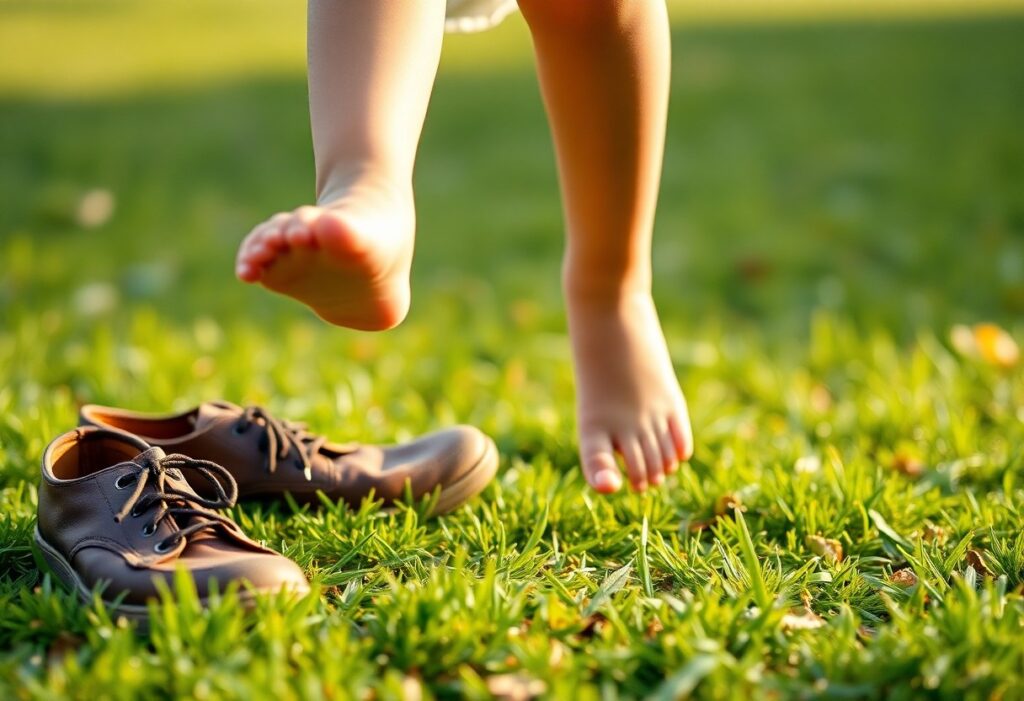









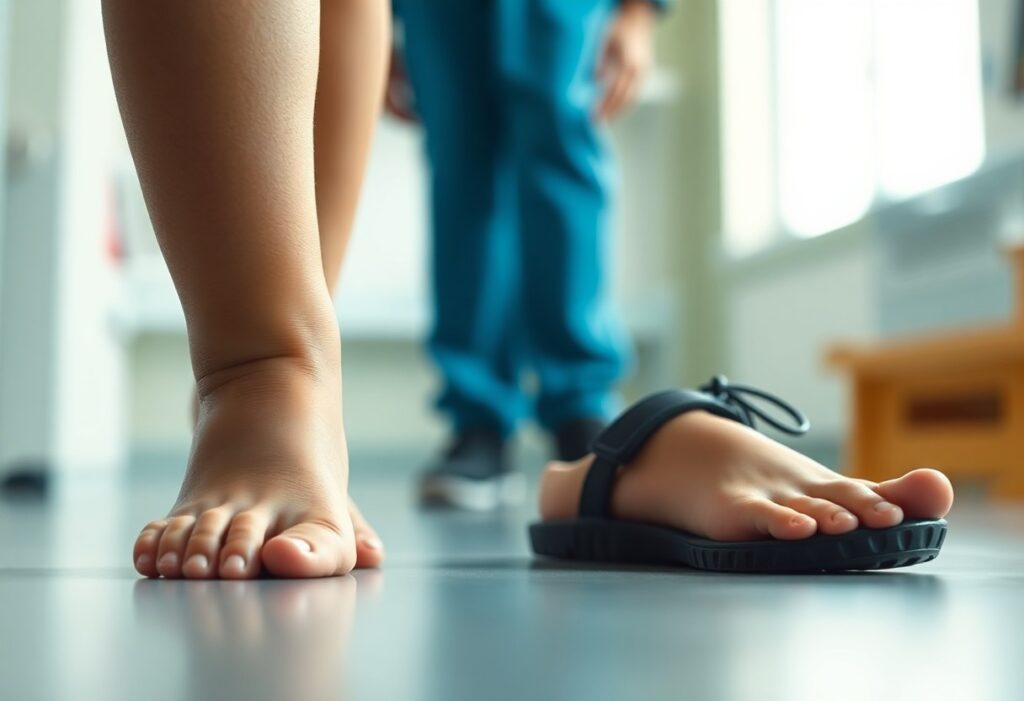
 Continuing our examination of pediatric footwear:
Continuing our examination of pediatric footwear: Continuing with effective strategies for pediatric footwear:
Continuing with effective strategies for pediatric footwear: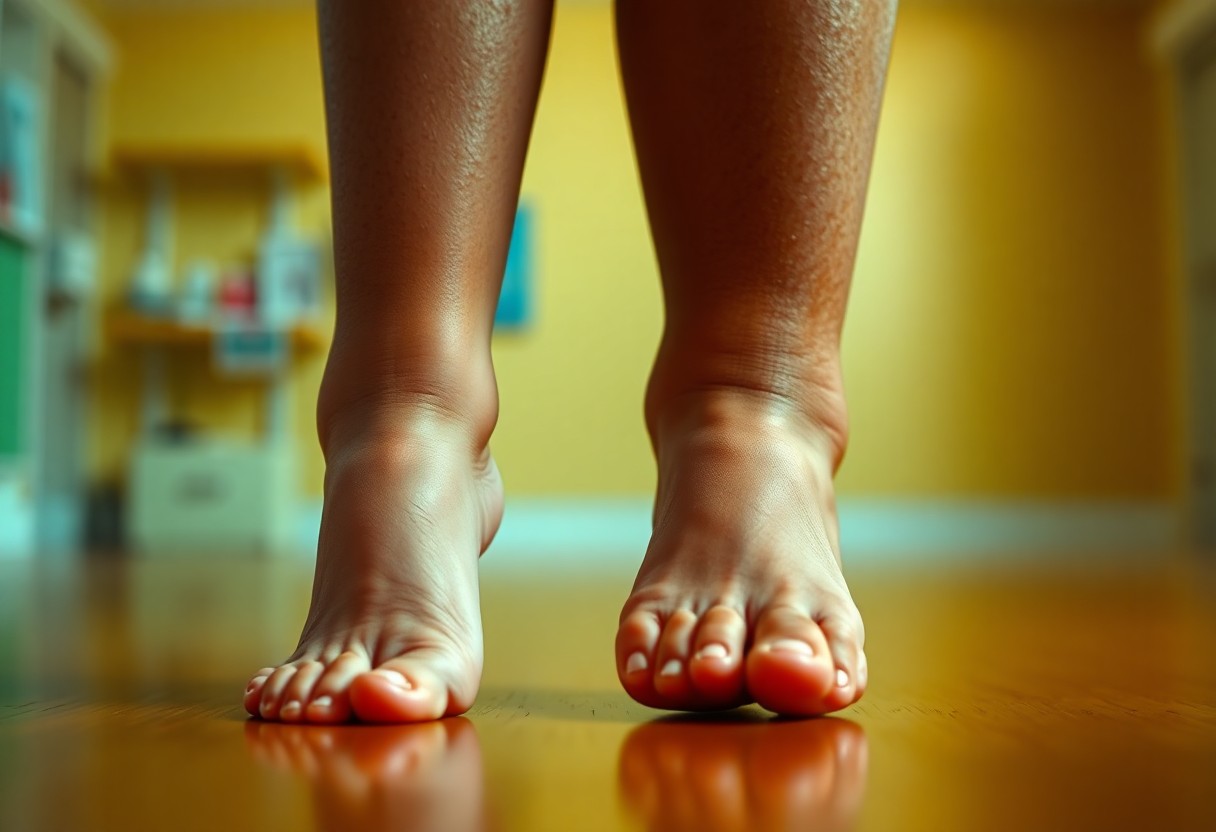 Continuing our exploration of future directions in pediatric foot health:
Continuing our exploration of future directions in pediatric foot health:
